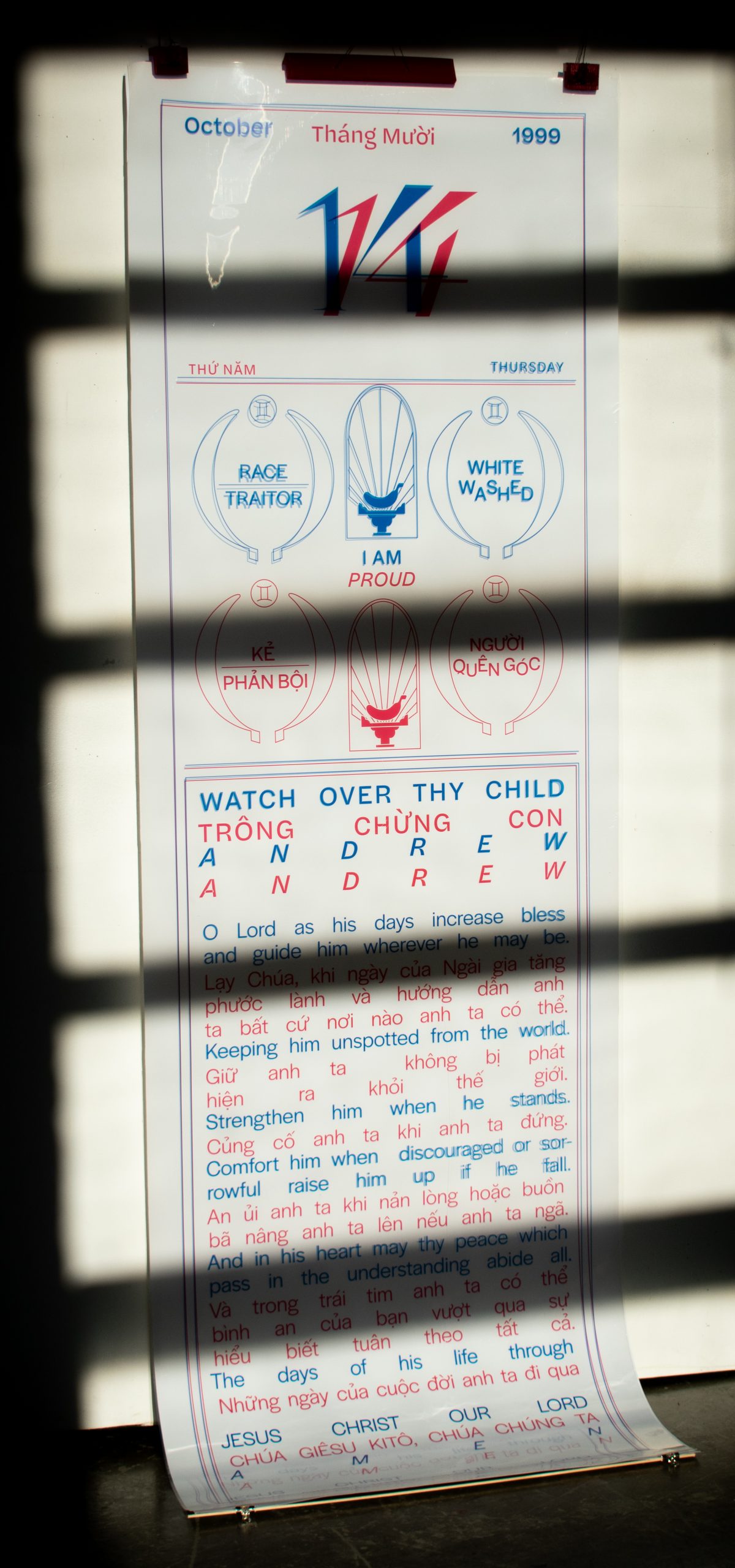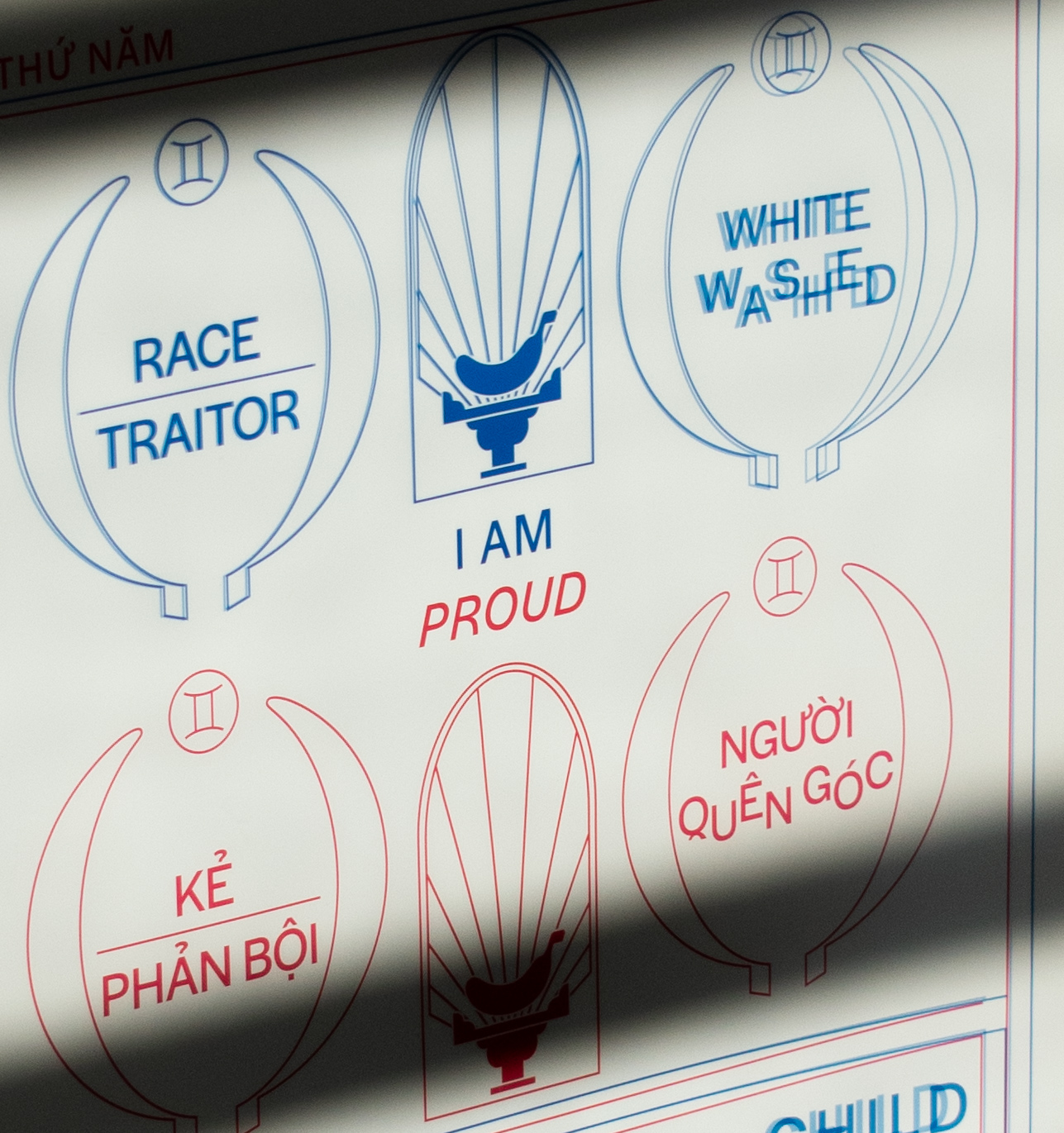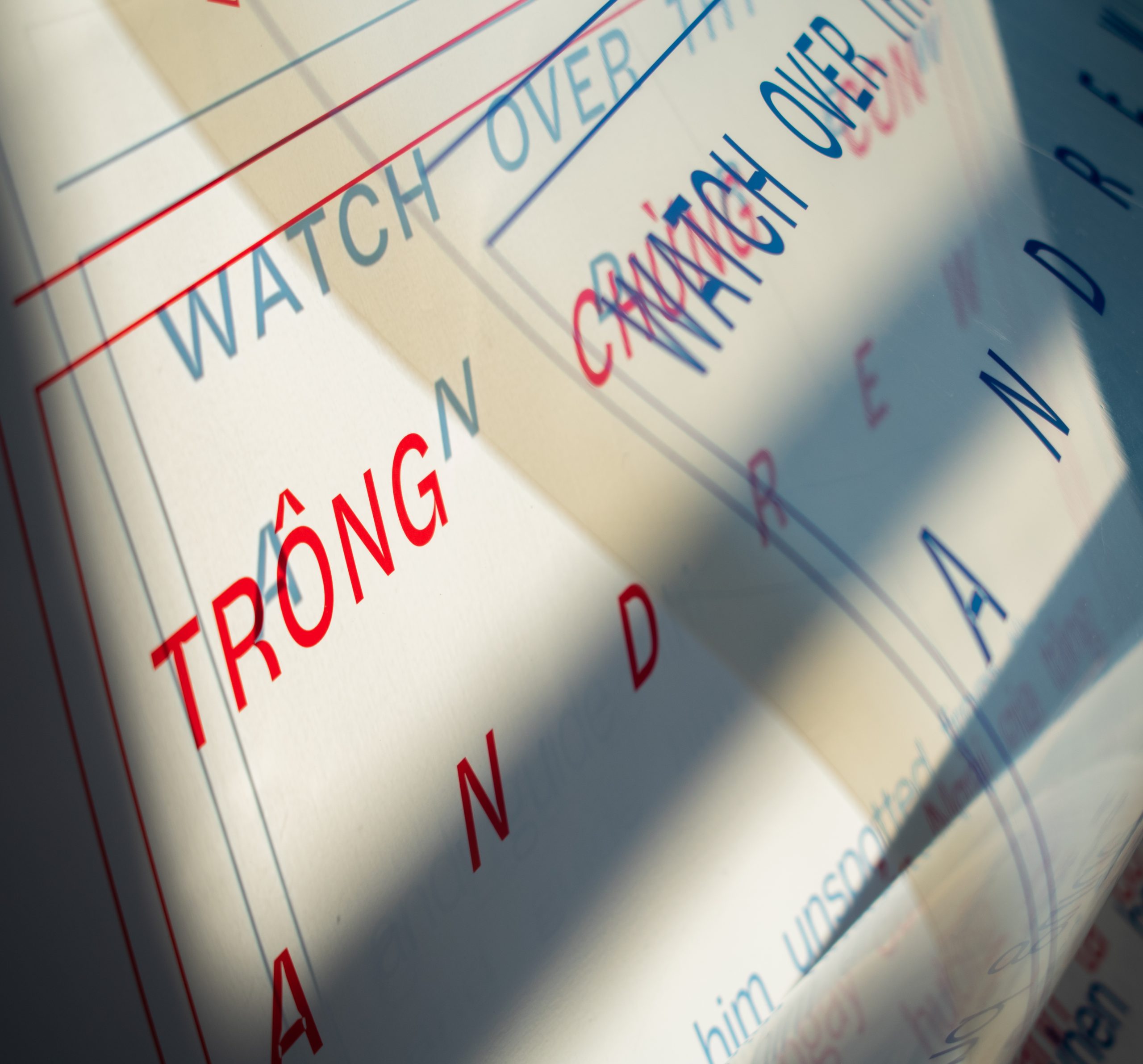Winner of Best Art: Reclamation by Andrew Caress
- Tell us a little about yourself? Do you have preferred pronouns? Are you currently a student, and in what grade/major?
I’m a Senior graphic design major and am from North Carolina. He/him
- Could you tell us about Reclamation? Is there an artist statement that you would like to share with it?
Reclamation was created to reclaim the derogatory term, “banana”, towards Asian Americans. It means yellow/Asian on the outside, and white on the inside.
- What inspired you to create Reclamation? Were there any outside inspirations?
I had a lot of motive for creating this piece. I’m an adopted Asian American (born in Vietnam) and before college I had completely dismissed my Asian identity. It was never something that I took seriously until college and when I arrived at VCU I had every intention to ingrain myself within the Asian community. I made a lot of Asian friends and met amazing people, but I heard the term, “banana” thrown around and specifically directed at me. I took the term as a joke, but it distanced me from those that grew up in an Asian household and me that grew up in a white household. I went to a historical black art high school. My school was underfunded and small, but we knew each other by name and became close. Eventually, cliques started forming. The groups were based on major and race; there were the black dancers, the white musicians, and I had my fellow visual art majors. I tried to fit in but realized something separated me and them. I lacked something so evident, yet I couldn’t grasp what it was. I realized I didn’t have anyone — nobody to relate to, no one who looked like me, no one who was adopted, no one who made me truly comfortable — I was alone.
In college, I tried my hardest to understand the culture. I used my art projects to educate myself, to research the traditions, the mythology, the geography. I watched videos on Vietnamese children’s stories. I ate the food, I picked up some Viet, I made a lot of friends within VCU’s Asian community; yet I was called a Banana. College was where I realized that no matter where I go, I was an in-betweener. I wasn’t specifically Asian, nor white — I am me. Reclamation was where I not only reclaimed the derogatory term, but where I accepted my in-betweener status.
- Is there a usual medium you work with? And why did you choose a printed medium for this piece?
I don’t want to restrict myself to one medium because it’s college and it’s the time to experiment; but also a graphic design professor once asked how the material I use reflects myself and if paper means something to me. So, I think I’m not defined enough of an artist to stick to one material yet.
I chose paper because it was part of a poster assignment, but also because the Go Lab offered transparent paper and decided to create two layers to the poster.
- Do you have a creative process that you follow when creating an art piece?
I usually create art that surrounds my adopted Asian-American ethnicity as well as using signifiers from Buddhism and Presbyterianism, so a lot of research is usually part of my process. My process doesn’t have a step-by-step guide, but it usually starts off with some sketching, lots of researching and asking my Asian friends a lot of questions about Asian culture.
- While creating Reclamation did you come across any difficulties? A creative block for instance, and how did you manage to overcome them to finish the piece?
My biggest block was figuring out how to display my Asian and American identity within this project. At the time, I thought that the poster would still be only one layer with red representing my Asian side and blue representing my American side, but over thanksgiving break I workshopped the idea of incorporating two layers and including the transparent paper from the Go Lab. I then asked my cousin (who's also a graphic design major at MICA) for some help and we decided to separate my identities between the two layers.
- Did you create Reclamation for a show or for a specific class?
This piece was a project for Core Studio 3 with Emily Sara and the assignment was to create a self-portrait.
- How does it feel knowing that your piece was selected as Best Art? Out of the pieces that you submitted do you feel there’s another that should have been selected?
Since I was the designer of (pwa-tem), I was very surprised when creating the table of contents. I saw that my piece had won best art and was like, “oh… okay, sweet!”. I am very happy that it has gotten recognition. I also submitted a more recent piece, “Watch Over Thy Child”, that I thought was pretty okay, but am still very happy that Reclamation was recognized.
- What is one thing you want people to take away when they read your piece?
I feel like this is an interesting question because I had never considered that my work would ever have an effect on others, but I want Asian-Americans, any minority or anyone to know that it’s okay to feel like you never belong. I think that feeling is powerful because I use that as inspiration to break the mainstream.
- Do you have any advice for future artists? Or what advice would you give your younger self?
My advice for future artists is that at the heart of a good artist is a good person. Art is driven through collaboration, dialogue and being kind enough to not harshly criticize mistakes. That’s how I learned.
I would tell my younger self three things:
My advice for myself is to never think that your experiences are unique. Artists only become good because they have applied their experiences in whatever medium they choose in a creative manner.
I’d also tell myself to never follow shallow trends. Don’t follow an aesthetic because it’s “aesthetic”, instead create work that's conceptually meaningful to you. If you are influenced by a work of art and make something that is visually similar — then you’ve probably digested it at a surface level. You see red you make red. Instead, inquire further. Ask, “why red?”, research the artist, find out their influences, and try to reach out.
Inspiration is good. Don’t ever try to block out your influences — instead, do the opposite and get completely immersed in them. Just because your art is based on heavy inspiration does not invalidate your art.


